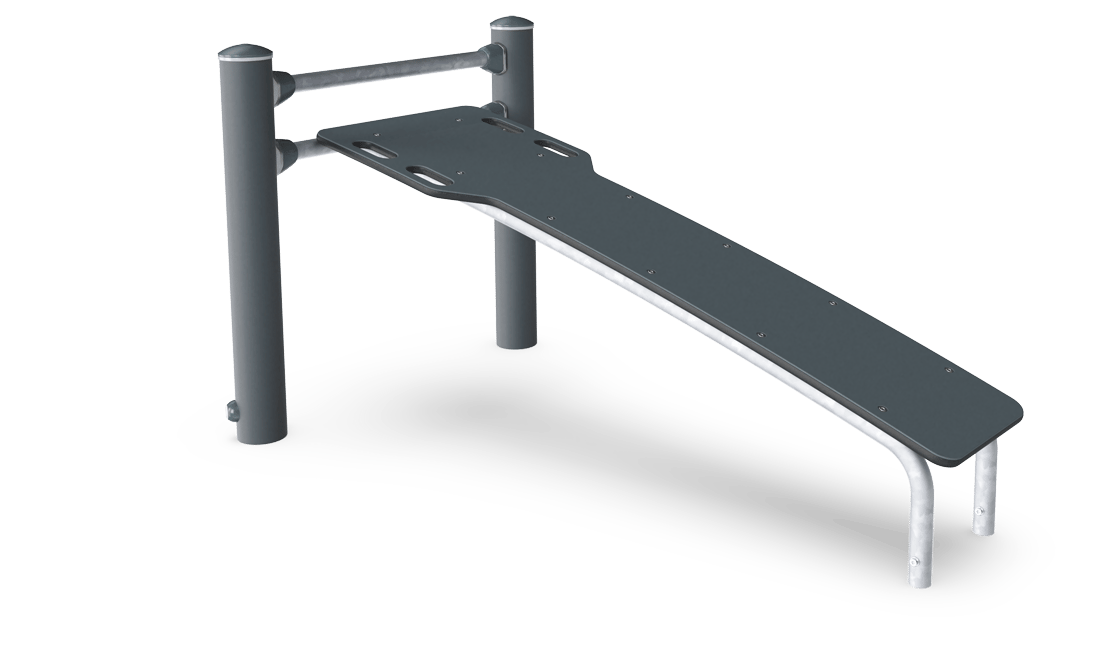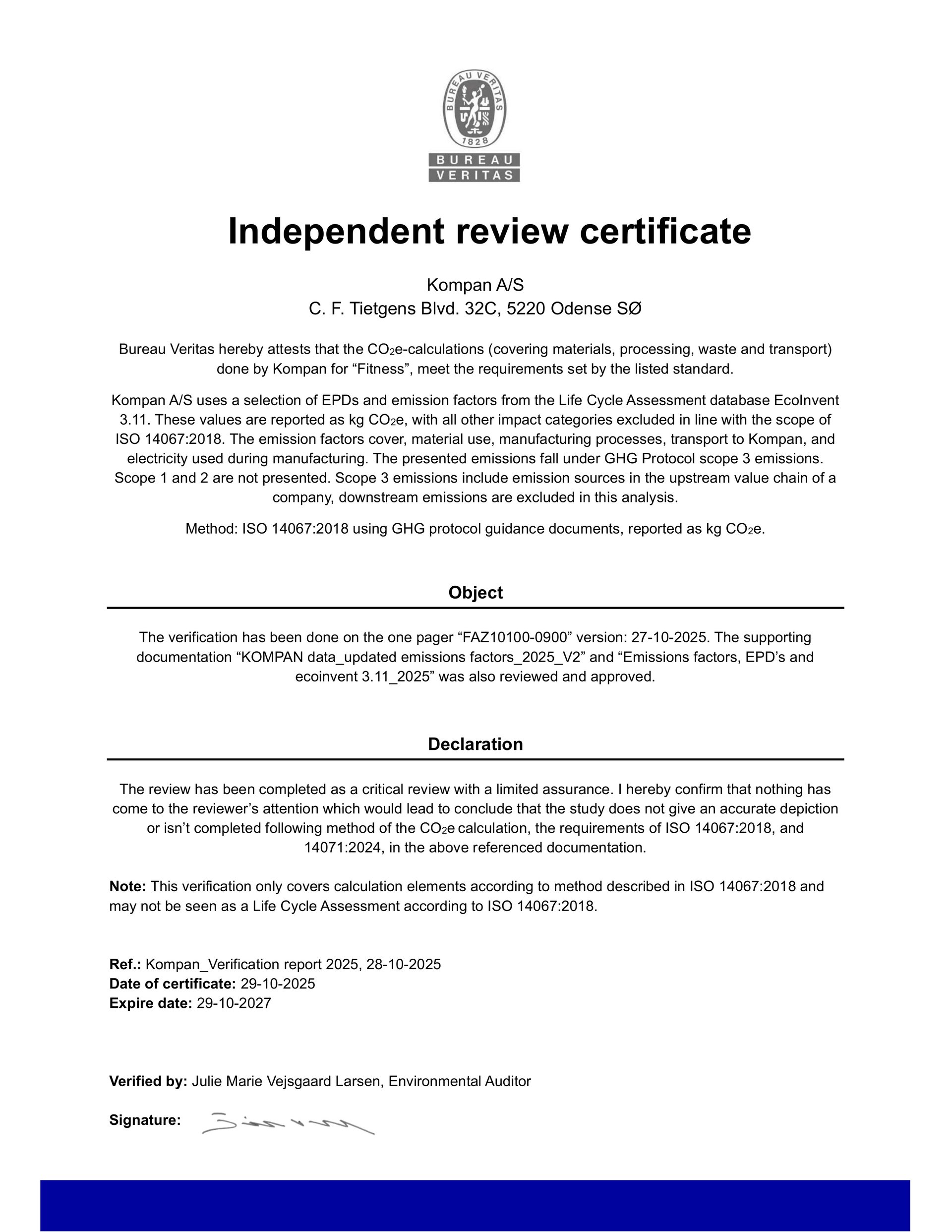The decline bench, similar to the straight bench, is perfect for training the core with lower back and ab exercises such as leg lifts and sit ups. The bench has a 15° decline, increasing the difficulty level of the exercises, making you work out harder. The durable Ekogrip® surfacing offers perfect grip, allowing the bench to be used as a jump box for performing various step and jump exercises under all weather conditions.
Length
151 cm
Width
89 cm
Height
81 cm
Specifications
The decline bench, similar to the straight bench, is perfect for training the core with lower back and ab exercises such as leg lifts and sit ups. The bench has a 15° decline, increasing the difficulty level of the exercises, making you work out harder. The durable Ekogrip® surfacing offers perfect grip, allowing the bench to be used as a jump box for performing various step and jump exercises under all weather conditions.
This product, Decline Bench (FPW204), is provided by KOMPAN Australia.
Quality that lasts
The post is made of Ø101.6 x 2mm, pre-galvanised carbon steel and powder coated which is a great protection solution for all climate conditions.
The connectors are made of die-cast aluminium, specially alloyed for the outdoor environments and heavy usage. The screws attaching the connectors are stainless steel and protected by zinc washers.
The surface is made of Ekogrip™ panels, consisting of 15mm polyethylene with a 3mm top-layer of thermoplastic rubber. The Ekogrip™ panels have a non-skid effect for comfortable and safe training at all weather circumstances.
CO₂ emission
Sustainability Data
Our product and sustainability data validation help our clients make informed, sustainable buying choices based on methods validated by Bureau Veritas.
FPW20400-0900
130.17
Total CO₂ emission (kg CO₂e)
3.4
CO₂e/kg (kg CO₂e/kg)
50.49%
Recycled materials
The overall framework applied for these factors is the Environmental Product Declaration (EPD), which quantifies "environmental information on the life cycle of a product and enables comparisons between products fulfilling the same function" (ISO, 2006). This follows the structure and applies a Life-Cycle Assessment approach to the entire Product stage, from raw material through manufacturing (A1-A3).

TENDER TEXT SPECIFICATIONS
Looking for tender specification texts?
Do you want to include this specific product in your project, and are you looking for detailed material information to help you specify? We have all the documentation you need. Fill out this form, and we will contact you with the relevant information you need.
How can we help you?
If you have any questions regarding this specific product or your project, we are here to help!












